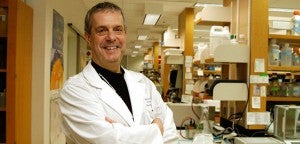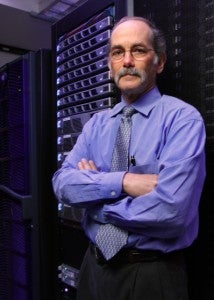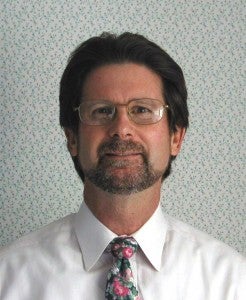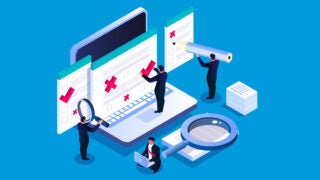Alzheimer’s: A disease that can rob us of ourselves
World Alzheimer’s Day is Sept. 21
Contact: Zen Vuong at (213) 300-1381 or zvuong@usc.edu
More than a century after Alzheimer’s disease was discovered, scientists and doctors still do not completely know what causes this degenerative disease, for which there is no cure.
Today more than 5 million Americans live with Alzheimer’s, a disease that kills more people than breast and prostate cancer combined. Family caregivers spend an average of at least $5,000 a year to support a loved one with Alzheimer’s, which is the sixth leading cause of death in the United States.
For these reasons, Alzheimer’s disease and dementia are among the most pressing of the many intractable problems USC researchers in multiple disciplines are seeking to unravel. Here are the approaches three USC scientists are taking to further understand the disease.
____________________________________________
 Berislav Zlokovic: Seeking to diagnose and treat Alzheimer’s disease before symptoms appear
Berislav Zlokovic: Seeking to diagnose and treat Alzheimer’s disease before symptoms appear
“High-resolution imaging of the living brain irrefutably shows that the blood-brain barrier, which protects neural tissue from blood variations and toxins, becomes leaky with age. The leak starts in the hippocampus area, a region responsible for memory and learning. The hippocampus is affected very early in Alzheimer’s disease. Notably, the leakiness begins long before there are any cognitive symptoms.
“Specialized brain scans might, in the near future, help doctors routinely spot very early, presymptomatic warning signs of dementia.
“When people are deficient in a key blood-brain barrier protein called GLUT1, which helps move glucose across the blood-brain barrier, they are more likely to have a compromised barrier — especially since glucose is a major energy source for a healthy brain.”
Berislav Zlokovic is the Mary Hayley and Selim Zilkha Chair in Alzheimer’s Disease Research and is director of the Zilkha Neurogenetic Institute at USC. Thomson Reuters listed Zlokovic as one of “the world’s most influential scientific minds” in 2014, announcing that he was one of the top cited authors in the field of neuroscience and behavior from 2002-2012.
Contact: (323) 442-2722 or zlokovic@usc.edu
____________________________________________
 Arthur Toga: Using big data to understand this heartbreaking disease
Arthur Toga: Using big data to understand this heartbreaking disease
“Alzheimer’s is a disease that can rob us of ourselves. And one of the major risk factors for contracting it is age. It is one of the most important challenges we face in health care today because it takes a toll not only on the patient and their family, but also on society and the world.
“Brain imaging provides a window into how Alzheimer’s disease affects us. We have developed a variety of approaches that extract information from brain imaging of hundreds of thousands of people. Using the power of big data, the latest in imaging, genetics and other measures has enabled us to discover exciting patterns distinguishing men and women at risk for Alzheimer’s disease.”
Arthur Toga is director of the USC Mark and Mary Stevens Neuroimaging and Informatics Institute and director of the Laboratory of Neuro Imaging. He is also provost professor of ophthalmology at the Keck School of Medicine of USC. In addition to be a leading expert in Alzheimer’s disease, Toga’s research focuses on neuroimaging, informatics, mapping brain structure and function, and brain atlasing.
Contact: toga@loni.usc.edu
____________________________________________
 Bradley Williams: How families can cope
Bradley Williams: How families can cope
“We need to educate younger people regarding strategies that may help to delay or prevent the development of dementia.
“Families are traumatized by the burden of caring for a member with Alzheimer’s disease or other dementias and are desperate for help. They often turn to advertised remedies that claim to halt or reverse symptoms, particularly since the available treatments are of little benefit. It is vitally important for health professionals to provide accurate information regarding medications to help families manage caregiving.”
Bradley Williams is a professor of clinical pharmacy and clinical gerontology at the USC School of Pharmacy and the USC Leonard Davis School of Gerontology. He is an expert in Alzheimer’s disease, dementia, health care and pharmaceutical use in the elderly.
Contact: bradwill@usc.edu
# # #
USC and Alzheimer’s disease research: USC researchers in multiple disciplines are seeking to untangle intractable diseases and conditions attached to aging, including Alzheimer’s and dementia. One in three seniors dies with Alzheimer’s or another dementia. Alzheimer’s is the only disease among the top 10 in America that cannot be prevented, cured or slowed.
Efforts to understand Alzheimer’s and dementia and to find preventive interventions and precise treatments are much more pressing as the baby boomer generation ages. The USC Schaeffer Center for Health Policy and Economics predicts the number of U.S. patients diagnosed with Alzheimer’s will more than double to 9.1 million in the next 35 years. By then, total annual care costs will top $1.5 trillion.



